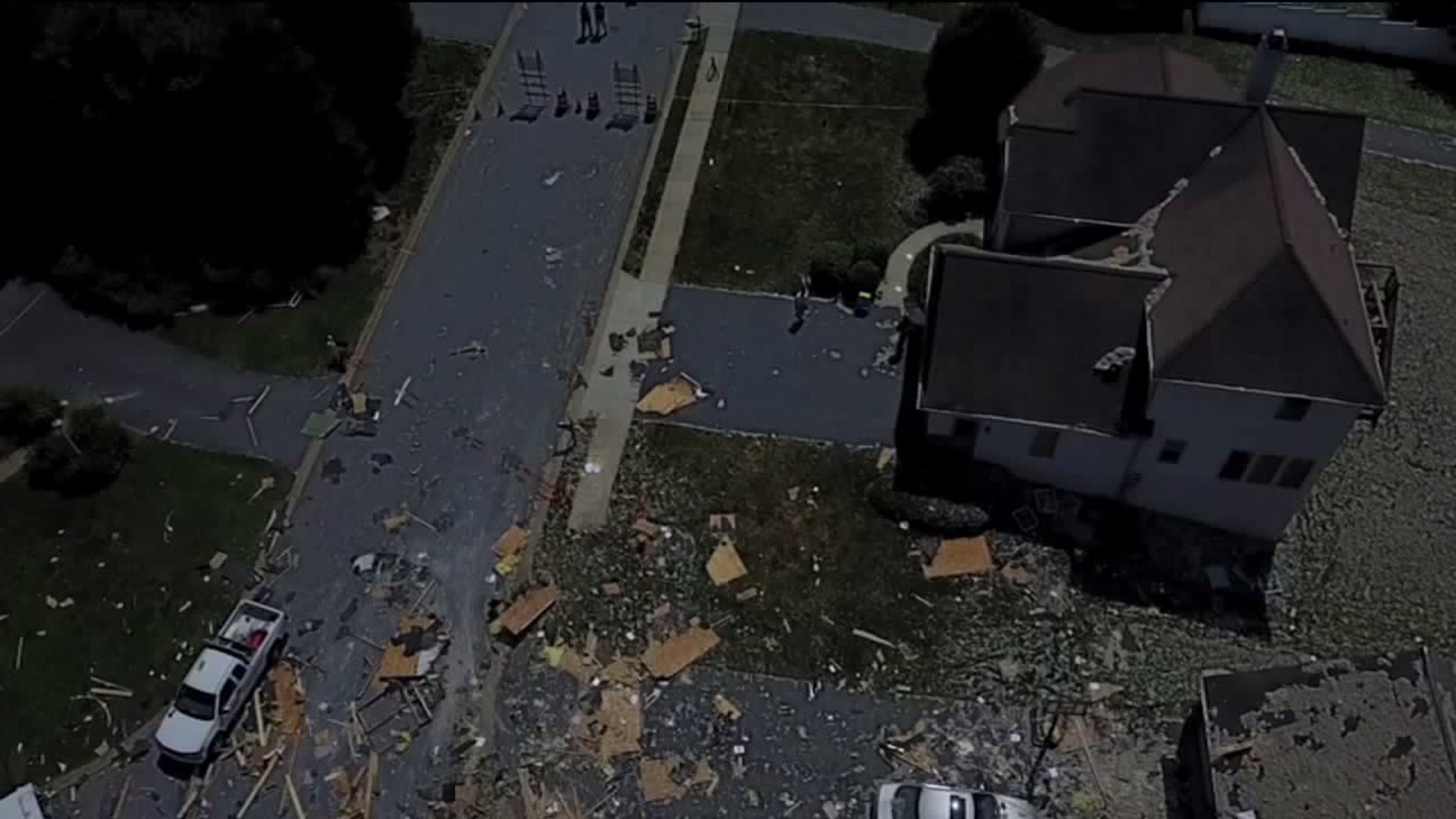MILLERSVILLE, Lancaster County -- The National Transportation Safety Board issued a preliminary report of the events leading up to the natural gas leak and explosion that killed a UGI worker, injured three others, and leveled a home on Springdale Lane on July 2.
The preliminary report contains no determination of probable cause, the NTSB said. It just lays out the sequence of known events leading up to the explosion.
Here is the NTSB's summary of events:
- About two hours prior to the explosion, a local resident detected the smell of natural gas near the house as she walked through the neighborhood. She phoned UGI, the gas utility company for the area. After receiving the call, UGI called 911 and dispatched a crew to determine whether a gas leak was present.
- The first UGI technician arrived at 11:00 a.m. This technician entered the residence at 206 Springdale Lane and measured the gas concentration with a gas detector. The technician determined the gas concentration was near its lower explosive limit (LEL). The technician assisted the lone occupant in the house with opening the doors and the windows to rid the house of the gas. About 12:20 p.m., the occupant was instructed by the UGI technician to leave. She drove her garaged vehicle out of the neighborhood.
- The two additional UGI technicians arrived at the scene shortly after the first UGI technician. These two technicians started excavating a location that was near the house at the edge of the cul-de-sac to stop the flow of leaking gas. Soon after the three UGI employees had arrived, a Lancaster Area Sewer Authority (LASA) employee arrived to locate sewer lines in support of a one-call dig request. Earlier gas measurements had detected natural gas in the sewage system.
- At the time of the explosion, the first UGI technician was working at the meter on the side of the house. Following the explosion, the technician was found within the debris field. The other two UGI technicians and the LASA employee were injured and hospitalized; however, their injuries were not life-threatening. Shortly after the explosion, the local fire department arrived in response to the UGI’s initial 911 call.
- The 2-inch gas main was visually inspected with a video camera that provides coordinates by the Global Positioning System (GPS) for each branch’s location. After the branches were located, the tapping tees were excavated and pressure tested. The tapping tee to the destroyed residence was found to be leaking. In addition, the sewer main in the cul-de-sac was visually inspected with a video camera to determine whether it had been compromised. A 6-inch sewer cleanout in the front yard of the destroyed house was missing its cap.
- The service line to the destroyed residence was also pressure tested and found to be free of any leaks. The gas meter, a portion of the service line riser, and three tapping tees were shipped to the NTSB Materials Laboratory for examination.

